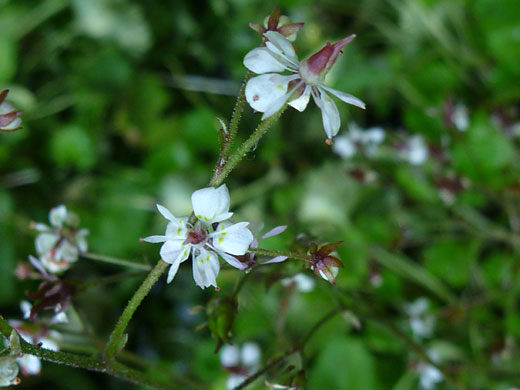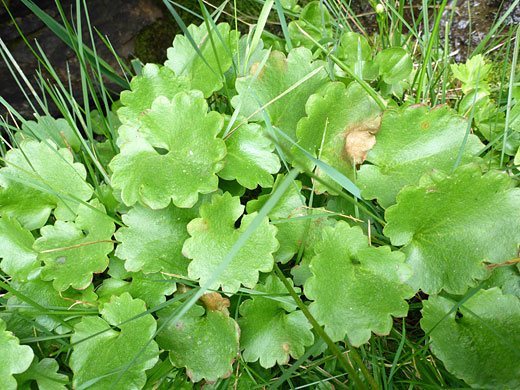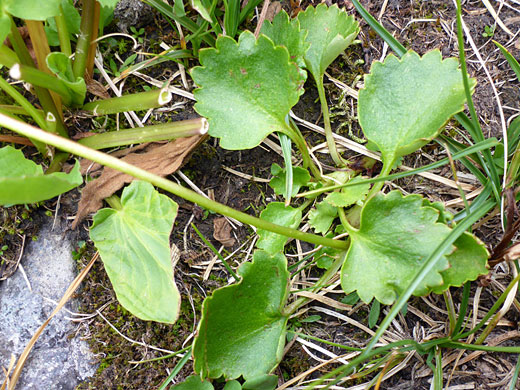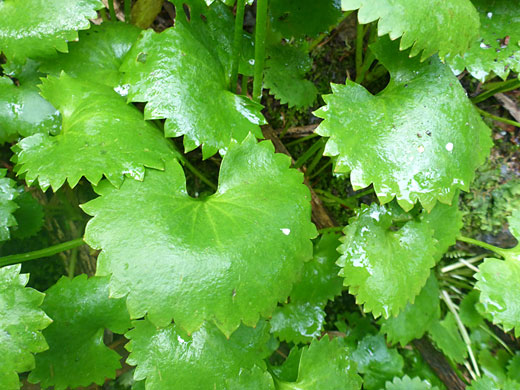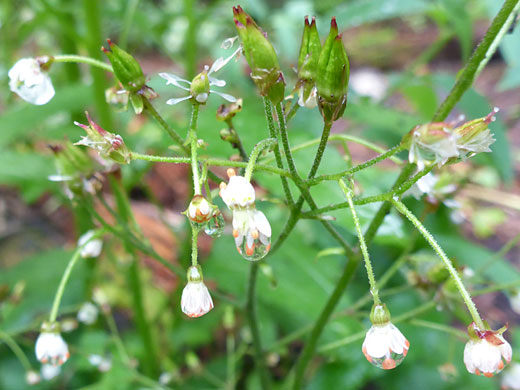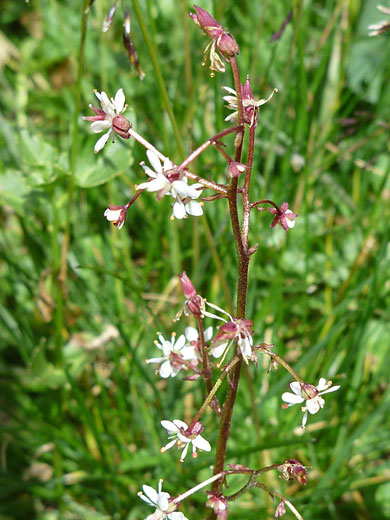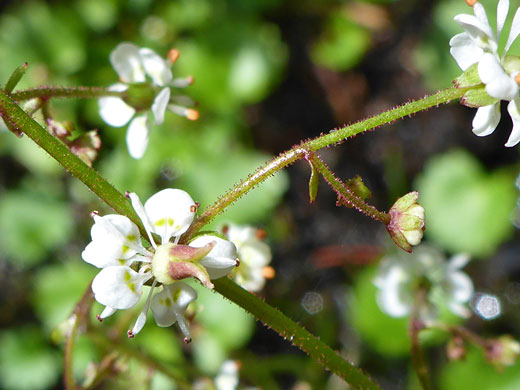Common name:
Brook saxifrage
Family:
Scientific name:
Micranthes odontoloma
Synonym:
Saxifraga odontoloma
Main flower color:
Range:
From the Pacific states to the Rocky Mountains
Height:
Between 8 and 24 inches
Habitat:
Moist, rocky locations, 5,000 to 13,000 feet
Leaves:
Reniform, 3 inches across, on stalks, with coarse or sharply toothed edges
Season:
July to September
The slender, reddish-green stems of micranthes odontoloma (formerly saxifraga odontoloma) are branched, leafless and somewhat glandular-hairy. Hairs and glands are red. The plant forms open, elongated flower clusters along the upper half of the stem, the heads borne on short stalklets which also branch a few times, and are similarly glandular.
Flowers have an intricate structure: five red, ovate sepals, spreading or bent backwards, beneath five rounded white petals, which are narrow at the base (clawed), and tend to be short-lasting. Petals have two greenish patches at the lower part of the wide section. Petals are bent back below the plane when fully mature. Ten thick white, petal-like stamens radiate out from the middle of the flowerhead, topped by yellow-brown anthers, while at the center is a red/purple ovary, split into two protruding lobes, each with a small style on top. The plant is quite widespread though restricted to moist locations; it is most often seen alongside streams in mountainous areas.
Flowers have an intricate structure: five red, ovate sepals, spreading or bent backwards, beneath five rounded white petals, which are narrow at the base (clawed), and tend to be short-lasting. Petals have two greenish patches at the lower part of the wide section. Petals are bent back below the plane when fully mature. Ten thick white, petal-like stamens radiate out from the middle of the flowerhead, topped by yellow-brown anthers, while at the center is a red/purple ovary, split into two protruding lobes, each with a small style on top. The plant is quite widespread though restricted to moist locations; it is most often seen alongside streams in mountainous areas.
All Contents © Copyright The American Southwest | Comments and Questions | Contribute | Site Map


